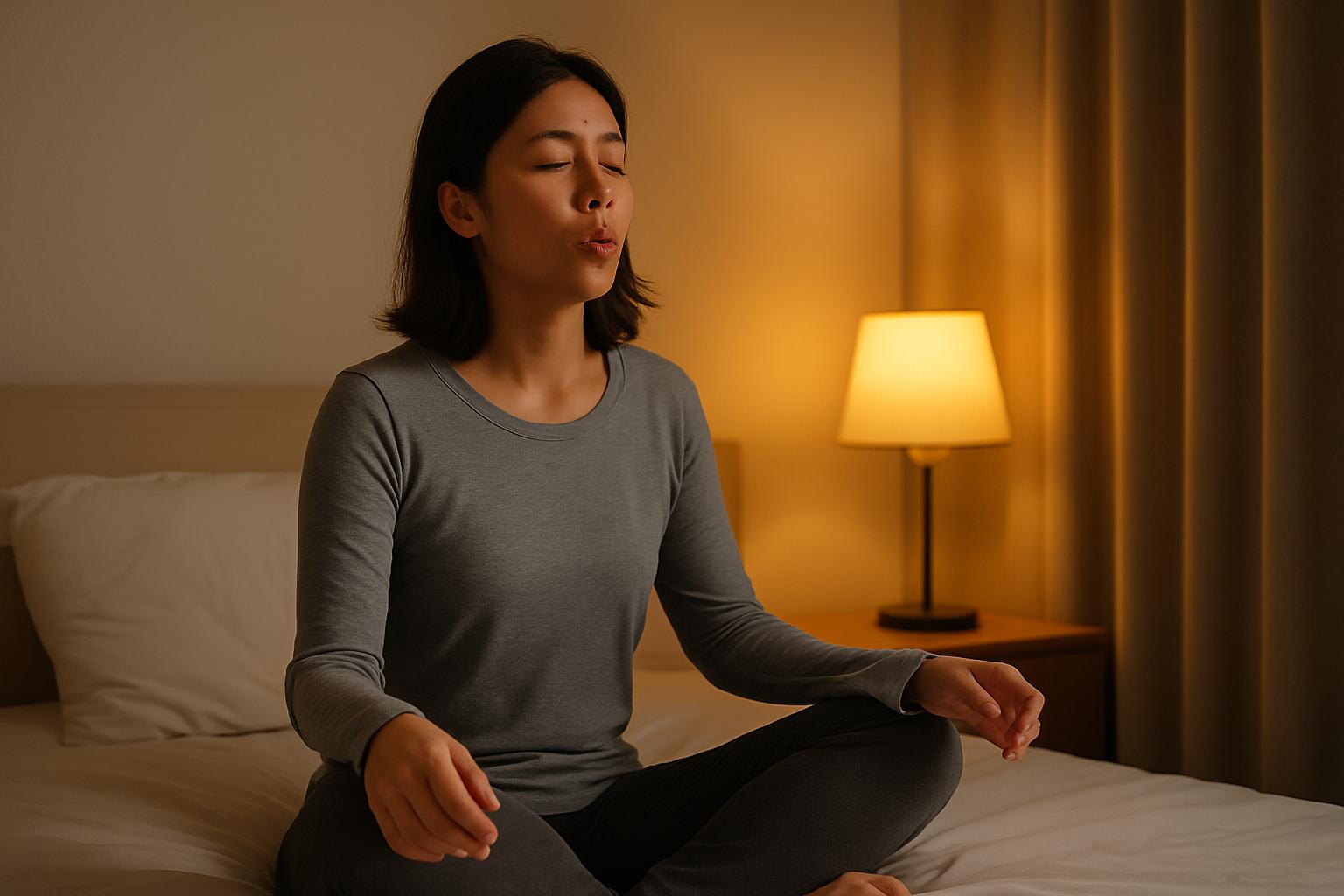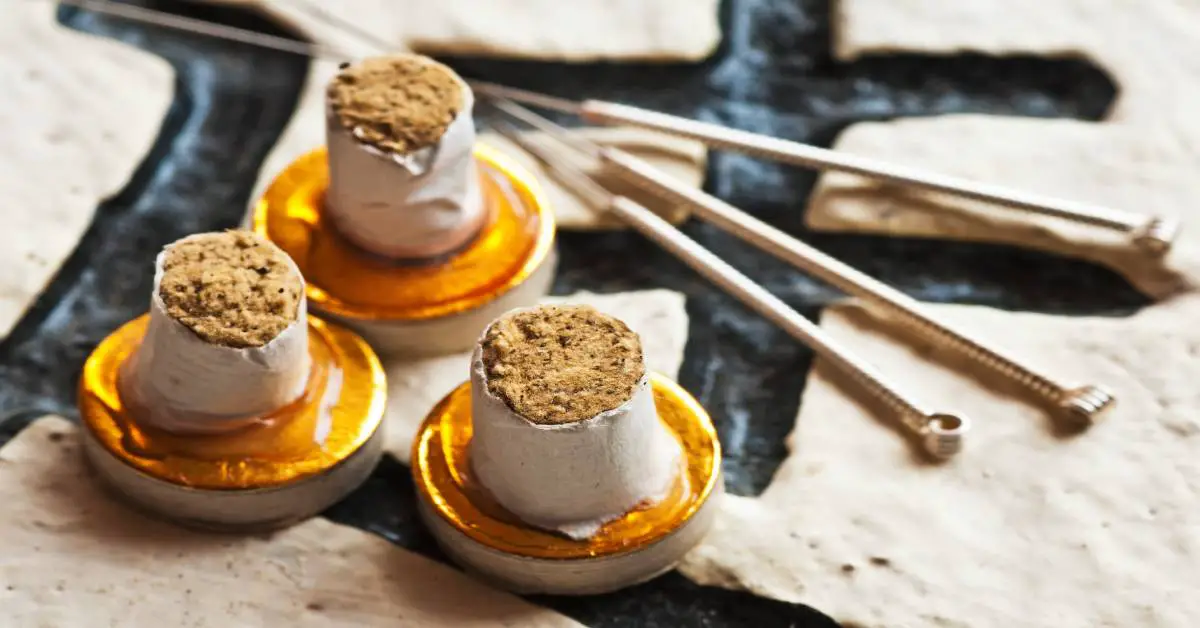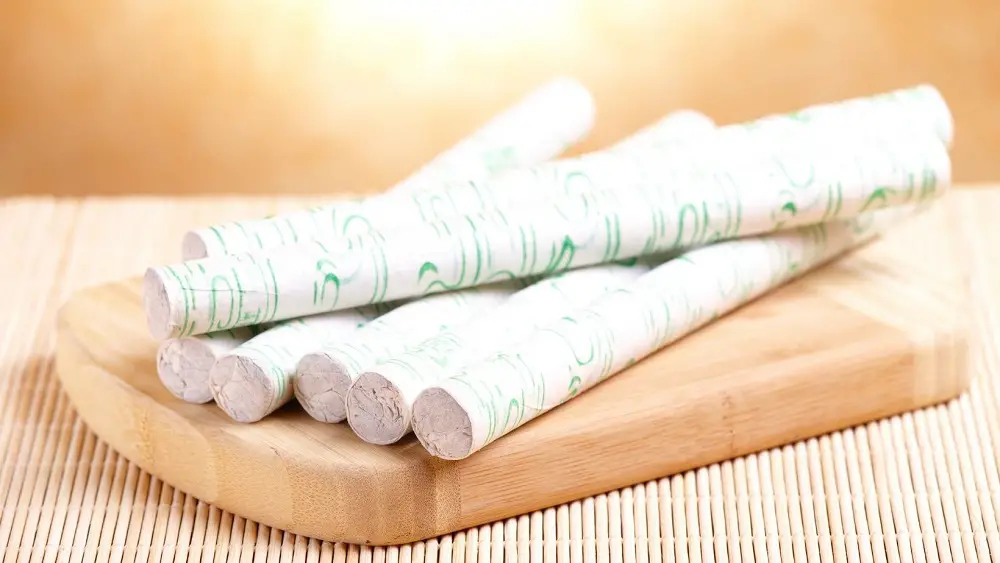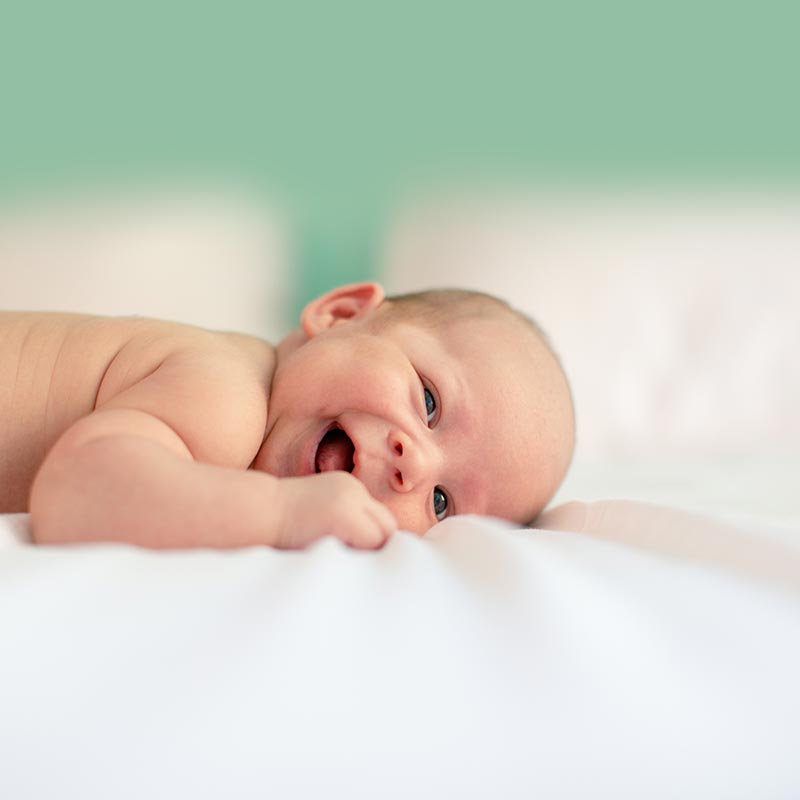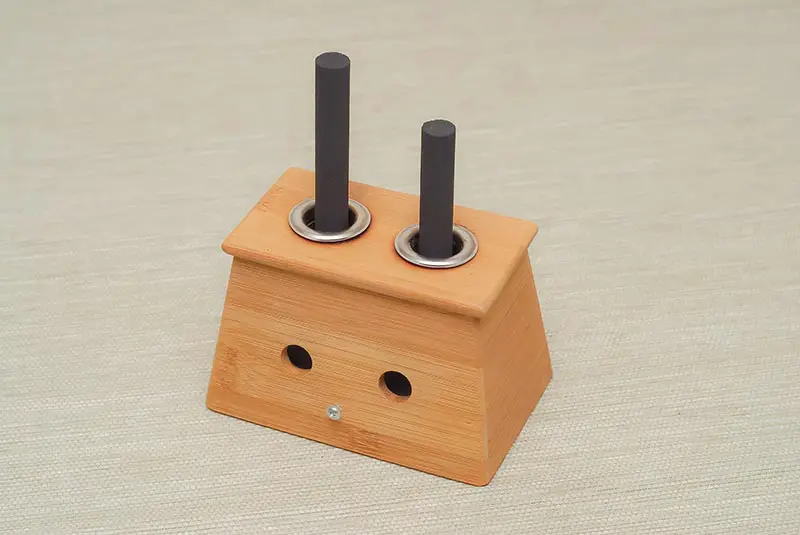I, like many of you, have had my share of acupuncture throughout the years. You see, before acupuncture, I could not remember a time in my life when I was not struggling with stress, back pain, headaches, and other common health issues that led me to take more sick days than my boss or me at that time would like. But it was not as if I was trying to get out of work; I was simply really struggling with my health.
These issues would come and go, sometimes one at a time, and sometimes all at once. And it was not only my career that was suffering – I was too, unable to do the things that I like with the people that I love.
Finally, a friend of mine gifted me with a coupon for an acupuncture session. Needless to say – I was rather skeptical. Despite that, I was not going to let that coupon go to waste, and so I headed off to the studio. Little did I know, I ended up leaving there, having scheduled my next appointment and with a bright smile on my face.
That is how my love for acupuncture first started. So, when I heard about this thing called moxa acupuncture, naturally, I was all in before I even knew what it was. You are now probably wondering what moxa acupuncture is. Let me share a spoiler to this story – I genuinely love it, and I am here to explain why that is! Oh, and one other thing – I bet that you will also be scheduling your moxa acupuncture in the near time as well.
What is moxa?
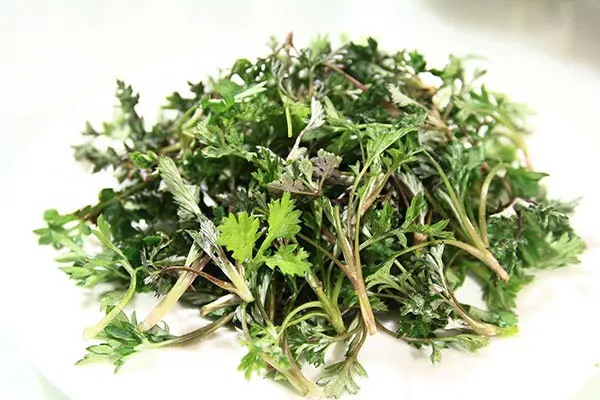
Moxa is made from the dried leaves of the ancient herb, also known as mugwort, but it can be made using other substances as well. This is quite a powerful herb; let me tell you that. It is often combined with other natural remedies such as salt and ginger to enhance its therapeutic properties. But what does moxa do exactly?
The truth is that this famous herb does many wonders for our body and mind. It is no surprise that moxa is a part of the famous moxa therapy, also called moxibustion, and my latest discovery – moxa acupuncture.
Moxa works by helping to warm up specific areas of the body to stimulate the flow of Qi and blood, but also to speed up the removal process of the pathogenic influences as well. Qi is translated as “vital energy,” and according to ancient Chinese medicine, it is the real substrate of the living universe.
We all have this Qi in our bodies; we just need to find the right ways to stimulate its flow, and with that, ensure our good mental and physical health. And moxa therapy is one of the best ways to do so.
The basics of moxibustion
What I did not tell you before was that as I was exiting the studio, apart from my smile, I was also carrying some rather heavy books on moxibustion. The lady that was responsible for that hour of pure enjoyment and relaxation was kind enough to lend me some books on moxibustion and moxa acupuncture. I was and still am eager to learn as much as possible about this ancient therapy technique. And I am also eager to share what I do know so far with you, my lovely readers!
The first mentioning of moxibustion is in letters and reports written back in 16th-century Japan. It quickly became clear to the doctors that were working then how powerful this new found method was. And so, from China, the use of moxibustion spread to Tibet, Korea, Japan, and Vietnam, and nowadays, it is done all across the world.
Moxibustion represents a form of heat therapy that involves the burning of dried leaves of the famous and beloved mugwort herb. There are two main techniques in which moxibustion is done. Direct moxa represents the rolling of the dried moxa into cones of various sizes. These are then placed onto the skin and lit, thus creating a more focused heat.
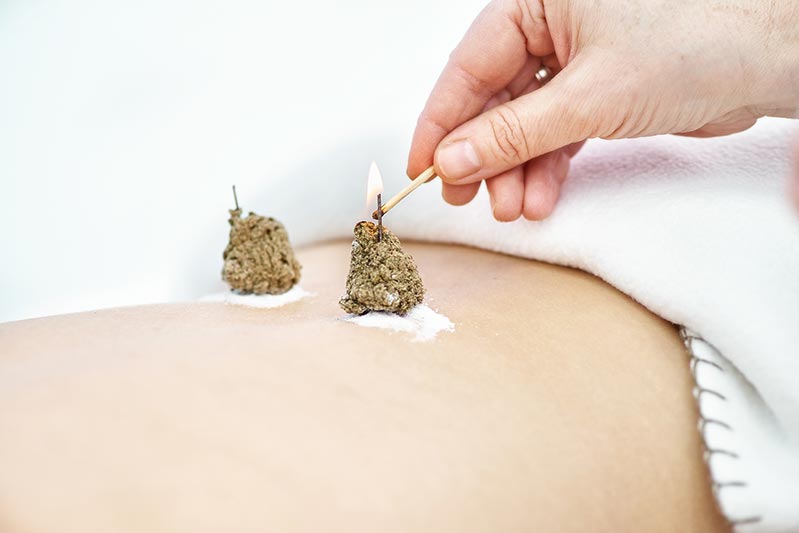
Unlike the direct moxa, during a session of indirect moxa, a dried, lit moxa leaf is pressed into a stick or a pole. But it is also commonly wrapped around a needle’s neck. And the second technique is the one that I got to try!
Combining the benefits of moxibustion and acupuncture
The second technique, also referred to as indirect moxa, involves pressing a dried moxa leaf into a stick or a pole. The object is then placed above the surface of the skin and lit of fire. In the case of moxa acupuncture, small balls of dried, burning moxa are placed on the head of the acupuncture needles, which have previously been inserted into the acupuncture spots.
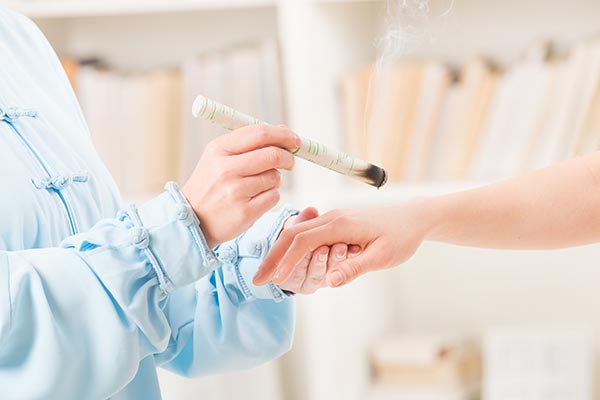
The moxa balls burn for approximately 20-30 seconds until they extinguish. This whole process is then repeated several times. It is believed that by combining both moxa and acupuncture, it is possible to enhance and maximize the effects of both therapies. Thus your body and mind can benefit completely.
Moxa acupuncture has been used for over three thousand years now, and I am amazed that I am lucky enough to be able to experience the benefits today. Here are some of the main health issues often treated with moxa acupuncture:
- Pain, caused by injury or arthritis;
- Digestive issues;
- Gynecological issues, including breech presentation in late-term pregnancy;
- Headaches and migraines;
- Boosting vitality;
- Improving immunity and protecting against flu and colds, etc.
For me, it was my constant complaining about my headaches that made my friend treat me with a moxa acupuncture coupon. And I am glad that she did that! Nowadays, I am referring to moxa acupuncture to relax and body and soothe my soul, not to mention the fact that I have not felt a headache or a migraine in such a long time.
How does moxa acupuncture feel?

Unlike moxibustion, which you can do alone at home, moxa acupuncture has to be done by a practitioner with an acupuncture license who is also allowed to perform moxibustion as well. Do your research and find a friendly and experienced practitioner who is practicing moxa acupuncture with the patience and love that it requires. I was lucky enough to have such a practitioner do my first ever session of moxa acupuncture, and I would not change her for the world!
No special preparation is needed. All that you need is to keep an open mind about what is to come and allow yourself to soak in the benefits that the session will bring you. Trust me, your life is about to change, as did mine.
If you are yet to schedule your first acupuncture session ever, then you should expect a minimal pain as the needle is being inserted in the skin—some report on feeling as if the needles are energizing them. As the moxa is being placed and then lit, you should expect a pleasant warm sensation. The sensation often penetrates deep into the skin but does not cause any pain nor scarring. If you are worried about any scars, don’t be because that is not going to happen in the middle of your moxa acupuncture session.
One thing that I did not mention is that you should expect a rather distinct smell. Some people, including me, actually like that smell and find it to be relaxing and calming. For others, it may take some willpower to get used to it and eventually be able to ignore it.
Thinking about it, the smell of moxa reminds me of the smell of marijuana. I remember thinking that as soon as I entered the studio for the first time. I also remember feeling a bit shocked. I asked my practitioner, and she was kind enough to explain to me that I was not the first person to think that.
By now, you are probably asking yourself how to get rid of moxa smell. For starters, you can always ask your practitioner whether they have a smokeless variety of moxa. Finding a studio with good ventilation and air purification system can be helpful in the elimination of the smell as well.
Conclusion
For over three thousand years, people have been using moxibustion and moxa acupuncture to treat their headaches, digestive issues, and even help breech babies. And now I am one of those people too! I hope I managed to inform you properly about what does moxa acupuncture does and why I think that you should try it too. And not to worry – I also shared some ways on how to get rid of moxa smell as well if that is what you are worried about!
Related Reading:
- How to Use Moxa at Home
- What Is Green Moxa Punk?
- Best Tips Ever: How to Make Moxa
- Why You Must Experience Acupuncture Needles That Stay In Ears At Least Once In Your Lifetime

Try our Anti-Aging Gua Sha Tool designed to bring out your skin’s natural glow.
Best Gua Sha Product- Anti-Aging: The tool is designed to target 11 specific aging signs such as wrinkles and sagging skin. By following the 7-step routine, users can improve skin firmness and reduce fine lines naturally.
- Enhances Skincare Routine: It works effectively with serums and lotions, boosting absorption and efficacy of skincare products.
- Visible Skin Improvement: Users can expect a smoother complexion, reduced puffiness, and a more youthful appearance.
 P. Sze
P. Sze 





